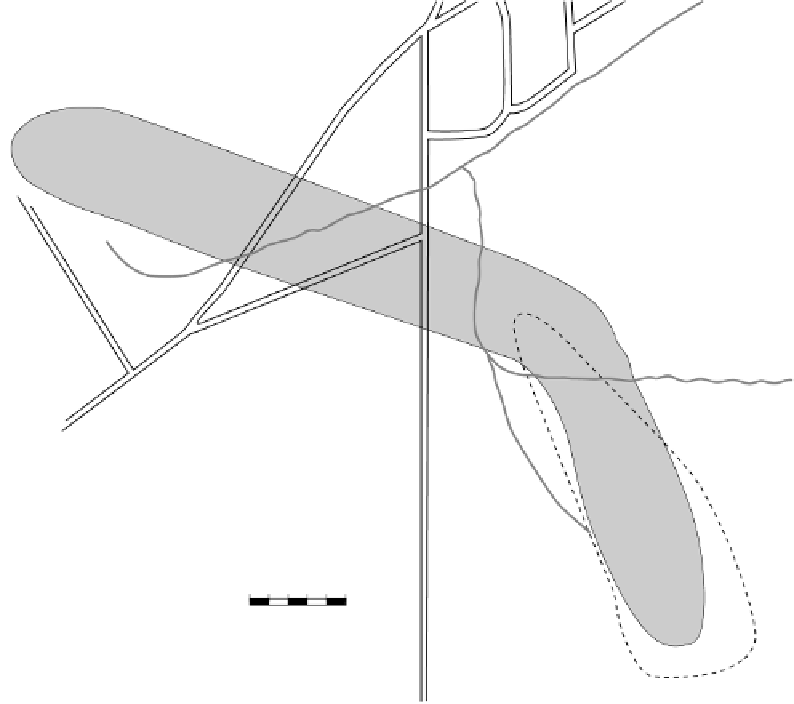Environmental Engineering Reference
In-Depth Information
Gary
Fort wayne
SRC
North
Indianapolis
0
500 feet
Terre haute
Seymour
Total VOCs
1,4-dioxane
FIGURE 8.2
July 1999 distribution of 1,4-dioxane (10 ppb contour) relative to total VOCs at Seymour
Indiana Superfund site, where the SRC operated (Feldman, S.M., 2000).
1,4-Dioxane is associated with soil, groundwater, and sediment at the SRC site (USEPA,
2007a). The soils were contaminated by 54 organic chemicals, including high concentrations of
1,1,2-trichloroethane, carbon tetrachloride, 1,1,2,2-tetrachloroethane, and trichloroethylene. The
presence of 1,4-dioxane in the groundwater was discovered by placement and sampling of moni-
toring wells during the remedial design phase of the project (USEPA, 1997). Subsequent sam-
pling revealed that 1,4-dioxane had migrated about 3900 ft north-northwest of the site boundary,
as shown in Figure 8.2. Although diverse chemicals, including methyl chloroform and THF (which
extends northwest of the site boundary by about 1300 ft), have contaminated the groundwater
near the SRC site, the plume itself is dei ned by the 1,4-dioxane. In the space of six years, between
1984 and 1990, the 1,4-dioxane plume advanced approximately 2000 ft (Feldman, 2000).
In mid-1990, at a monitoring well located on the plume centerline about 1500 ft downgradient of
the site boundary (where the plume turns to the left in Figure 8.2), the 1,4-dioxane concentrations
had decreased from about 2300 ppb to less than 100 ppb. Other shallow monitoring wells along the
plume core generally decreased from about 500 ppb to less than 100 ppb (Feldman, 2000).
8.1.2 R
ISK
M
ANAGEMENT
The foremost risk at the SRC site included offsite migration of highly mobile organic contaminants
that could arrive at the nearest private well, one-quarter mile northwest of the site, at concentrations






Search WWH ::

Custom Search